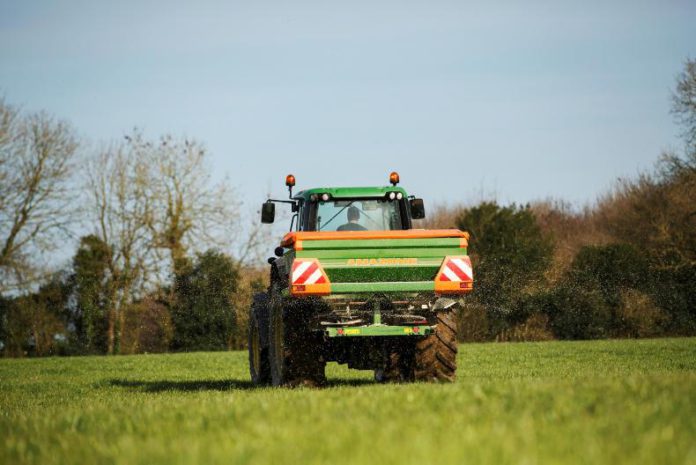Chemical N advice for farmers
“If available, do not limit chemical N use for silage this year. Paying for expensive concentrate or purchased forage to fill a shortfall this winter will be more expensive.”
That is the advice CAFRE’s (College of Agriculture, Food and Rural Enterprise) Richard Gibson has issued to farmers this year in light of “record-high” rising fertiliser costs.
In the dairying segment of CAFRE’s management bulletin for April 2022, he has reminded farmers that grazed grass is the cheapest feed for dairy cows.
On the back of this, he has advised farmers to monitor feed costs and ask themselves: Am I getting maximum use from grass or forage?
Furthermore, he has urged farmers to focus on livestock on their farm. He asked: Are there problem cows in the herd with SCC, fertility, or feet issues?
Besides, he said that farmers should budget slurry application across all silage cuts that they have planned for this year.
His main message to farmers is to plan their forage requirements for the winter ahead.
More expensive silage
He commented: “Fertiliser is more expensive; fuel cost has increased, and contractor charges will be higher this year. This will result in significantly more expensive forage being made.”
“Chemical nitrogen (N) is vital for first cut silage as it sustains yield and quality. The nutrient requirement for first cut silage on dairy farms is 120 kg N per hectare or 96 units per acre.”
“Given that 2,500 gallons per acre of slurry will have supplied 24 units per acre, an additional 70 units of chemical nitrogen is required.”
He said that on many farms this year, this application will be split in half, with the first half already spread.
He added that the second application will go on in early April. Therefore, farmers should take time now to determine forage requirements.
Some key pointers are:
- Ensure you make sufficient silage for the winter ahead. Do not allow chemical N prices to result in a shortfall in forage on your farm this winter;
- Calculate how much forage you need to harvest this year, taking into account any remaining silage stocks;
- Detailed stock numbers on your farm will be critical for this calculation. Also, factor in cull cows and any other livestock you plan to sell-off.
Other articles on That’s Farming:





